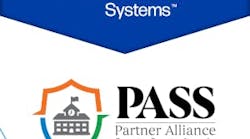In the aftermath of the school shooting at the high school in Campbell County, Tenn., many parents will be asking your school district about what can be done to prevent incidents likes this from occurring in the future. One part of the answer may be close at hand, but not all school districts are taking advantage.
While the details of what happened in Jacksboro, Tenn., may never be fully known but experts seem to agree that schools need more than just physical security devices to adequately safeguard our children. One such program that was released three years ago is described below, and it's highly applicable for today's educational facility security directors facing increased concern from community leaders and area parents.
Starting in 1999 and concluding in 2002, the U.S. Secret Service and the U.S. Department of Education coordinated on the Safe School Initiative, a study of school shootings and other school-based attacks. The purpose of the study was to provide information to school districts that would assist in preventing school shootings.
According to the Secret Service, report: "The focus of the study was on developing information about the school shooter's pre-attack behaviors and communications. The goal was to identify information about a school shooting that may be identifiable or noticeable before the shooting occurs, to help inform efforts to prevent school-based attacks. The study found that school shootings are rarely impulsive acts. Rather, they are typically thought out and planned out in advance.
"In addition, prior to most shootings other kids knew the shooting was to occur -- but did not alert an adult. Very few of the attackers, however, ever directed threats to their targets before the attack.
"The study findings also revealed that there is no ‘profile’ of a school shooter; instead, the students who carried out the attacks differed from one another in numerous ways. However, almost every attacker had engaged in behavior before the shooting that seriously concerned at least one adult - and for many had concerned three or more different adults.
"The findings from the study suggest that some school attacks may be preventable, and that students can play an important role in prevention efforts. Using the study findings, the Secret Service and Department of Education have modified the Secret Service threat assessment approach for use in schools - to give school and law enforcement professionals tools for investigating threats in school, managing situations of concern, and creating safe school climates."
The Secret Service and Department of Education study released 10 major findings:
- Incidents of targeted violence at school rarely are sudden, impulsive acts.
- Prior to most incidents, other people knew about the attacker's idea and/or plan to attack.
- Most attackers did not threaten their targets directly prior to advancing the attack.
- There is no accurate or useful "profile" of students who engage in targeted school violence.
- Most attackers engaged in some behavior, prior to the incident, that caused others concern or indicated a need for help.
- Most attackers had difficulty coping with significant losses or personal failures. Many had considered or attempted suicide.
- Many attackers felt bullied, persecuted, or injured by others prior to the attack.
- Most attackers had access to and had used weapons prior to the attack.
- In many cases, other students were involved in the attack in some capacity.
- Despite prompt law enforcement responses, most attacks were stopped by means other than law enforcement intervention and most were brief in duration.
David Deloria, superintendent of the Livonia Central School District in New York is one school district that has taken the initiative to implement the Targeted Threat Assessment Program. He explains how the process worked for his school.
"We are dedicated to making our campus as safe as possible," said Deloria. "We implemented the Targeted Threat Assessment Program in our school district and have executed program assessments of students on numerous occasions. Most of the time, after evaluating a potential threat, we concluded that the student did not pose an actual threat of violence. However on a couple of occasions, we believe that our interventions have prevented an incident from escalating to the point of possible violence. When our assessments resulted in a finding that a student is likely on a path to violence, we implemented a management plan to prevent the attack and protect the targets."
"Successful management of a threatening situation required substantial time and effort," continued Deloria, "but was better than having to manage the consequences of an incident. Management of these situations comprises three related functions:
- Controlling/containing the situation and/or student in a way that will prevent the possibility of an attack;
- Protecting and aiding possible targets; and
- Providing support and guidance to help the student deal successfully with his/her problems."
Deloria has encouraged other school districts to look into the program, noting the no-cost approach and the program's ready availability to school districts in need.
"We cannot imagine a situation where a district would not implement this program," said Deloria. "We were able to do so without spending any capital funding and provided the necessary training during the course of normal in-service training for our teachers and staff. A district that has not implemented this program would be challenged to fairly represent to their communities that they are doing everything in their power to prevent these types of incidents from occurring."
In closing, the findings of the Safe School Initiative suggest that some future school attacks may be preventable. The fact that most attackers engaged in pre-incident planning behavior and shared their intentions and plans with others, suggests that those conducting threat assessment inquiries or investigations could uncover these types of information.
The threat assessment program is intended to assist school officials in implementing a process that will inform judgments and increase the likelihood that actions based on these judgments will prevent incidents of targeted violence in schools. Instead of basing judgments of risk on student traits or whether the student made specific threatening statements, the threat assessment process focuses on evaluating that student's behaviors and communications and determining whether those behaviors and communications suggest that the student has the intent and capacity to carry out a school attack.
Additional Resources:
For more information on the program and steps for implementation, please visit the web sites below.
- Two reports are available on the U.S. Secret Service web site at http://www.ustreas.gov/usss/ntac_ssi.shtml that define how the lessons learned from this study can be implemented at any school district.
- Article contributor Frank Pisciotta has prepared an executive summary of these two reports. This report can be viewed on his website at http://www.securingpeople.com/threatassessment.asp.
About the author: Frank Pisciotta is president of Business Protection Specialists, an international security consulting firm headquartered in Canandaigua, N.Y. Business Protection Specialists Inc. has assisted its clients in preventing security incidents and crime since 1990. He was recently named by the IAPSC as its eighth CSC (Certified Security Consultant), and is a member of of the Institute of Internal Auditors. He is an ASIS member who achieved his CPP in 1994.


